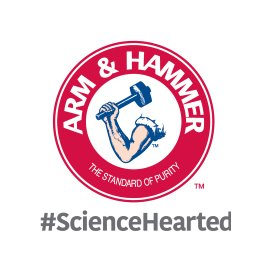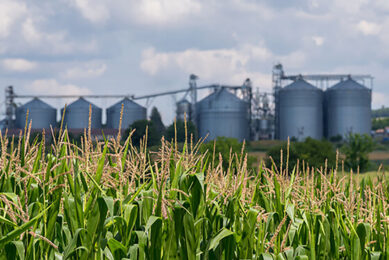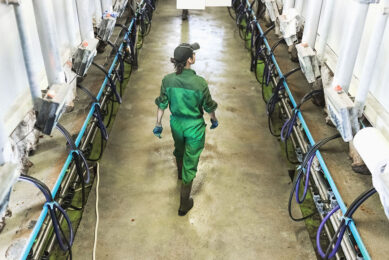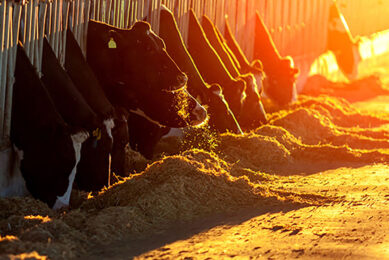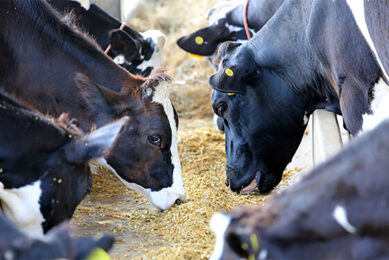Nutritional factors to help prevent heat stress
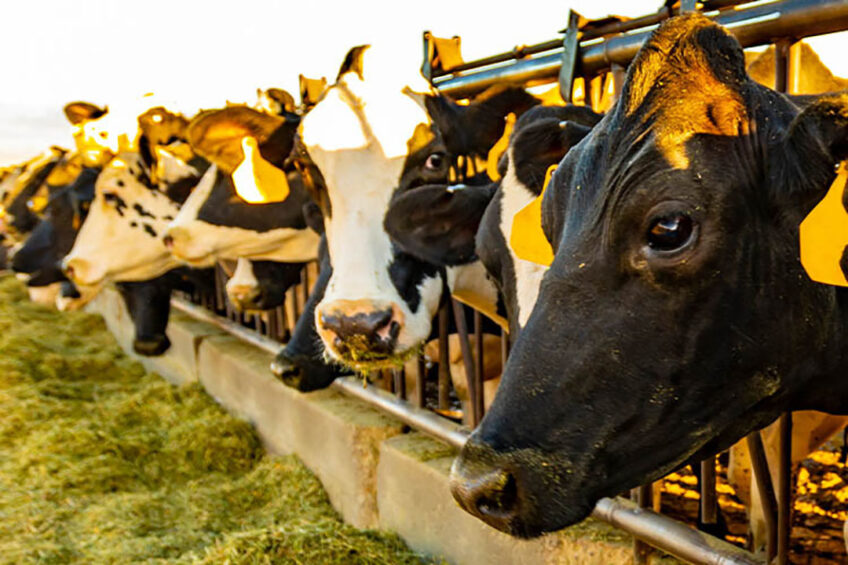
With summer approaching, it is key to help prepare your dairy farm and cows for the rising temperatures and humidity levels. Now is the time to mitigate the effects of heat stress by planning heat abatement strategies before temperatures increase.
In addition to adding more heat abatement strategies like cow cooling or return lane waters, focusing on nutrition can help limit the reduction in milk production and feed intake seen in warmer months. Preparing your dairy herd through a sound nutrition strategy, including a balanced ration, may limit the effects of heat stress. A focus on potassium in the diet and adding buffers are two important nutrition factors to consider during summer months.

Stabilise diet with buffers
A reduction in feed intake is common during heat stress periods which can lead to a decrease in rumination and saliva. Subclinical and acute rumen acidosis can occur when there is reduced feed intake. The addition of buffers to a dairy cow’s diet can help improve feed intake and rumen performance by stabilising rumen acids.
Following recommended levels of feed buffers is key to optimizing cow success. The recommended inclusion rate is up to 1 lb. of sodium bicarbonate or 1.5% of total mixed ration (TMR) dry matter, or enough sodium bicarbonate to increase dietary sodium to 0.8% as dietary cation-anion difference (DCAD) requires. Another important factor to consider is diets with more fermentable carbohydrates need more buffering.
Potassium: An important dietary consideration
In times of heat stress, potassium is essential in dairy cattle diets. Potassium is the most common mineral found in milk. However, in the summer cows are prone to potassium deficiencies. Because cows lose potassium through increased perspiration and urination it is crucial to replace the loss of potassium by adjusting the diet.
Fresh cows are one group to keep an eye on for potassium deficiency. Research indicates fresh cow potassium deficiency in the 10 weeks following calving requires a higher potassium level in their diets.
For fresh and high production cow diets, managing dietary levels of 1.7% to 2% potassium supports maximise production and improves fresh cow starts during heat stress. Research shows increasing potassium levels in dairy cattle rations can boost fat-corrected milk production by as much as 8.5 pounds per day.
DCAD Plus, a potassium product available from Arm & Hammer Animal and Food Production, replenishes potassium that is lost during production and daily cow maintenance like perspiration and urination. It gives the additional potassium needed without the negative effects of chloride or adverse ration heating. The product keeps cows hydrated, leading to more consistent productivity, and supports milk fat production. It supports a positive DCAD when fed throughout the cow’s lactation, particularly when fed in the warmer months.
Prepare before the heat
Creating a plan to balance the ration before times of heat stress will help ensure maximum production and productivity in your herd. In the summer, cows lose more minerals through sweating, urination, and saliva. Using buffers to help stabilise rumen acids and adjusting the ration to account for the cow’s potassium reduction could increase fat-corrected milk production.
Focusing on other areas outside of your feeding program during the summer months can help limit effects of heat stress. Other considerations during the warmer temperatures include delivering feed at the coolest times of the day, feeding more frequently (with smaller loads) throughout the day to keep the bunk cool, and checking yeast culture levels in the ration.
References available on request
Author: Dr. Ruby Wu, Ruminant Technical Services Manager, Arm & Hammer Animal and Food Production
For more information, visit AHFoodchain.com.
Join 13,000+ subscribers
Subscribe to our newsletter to stay updated about all the need-to-know content in the dairy sector, two times a week.


